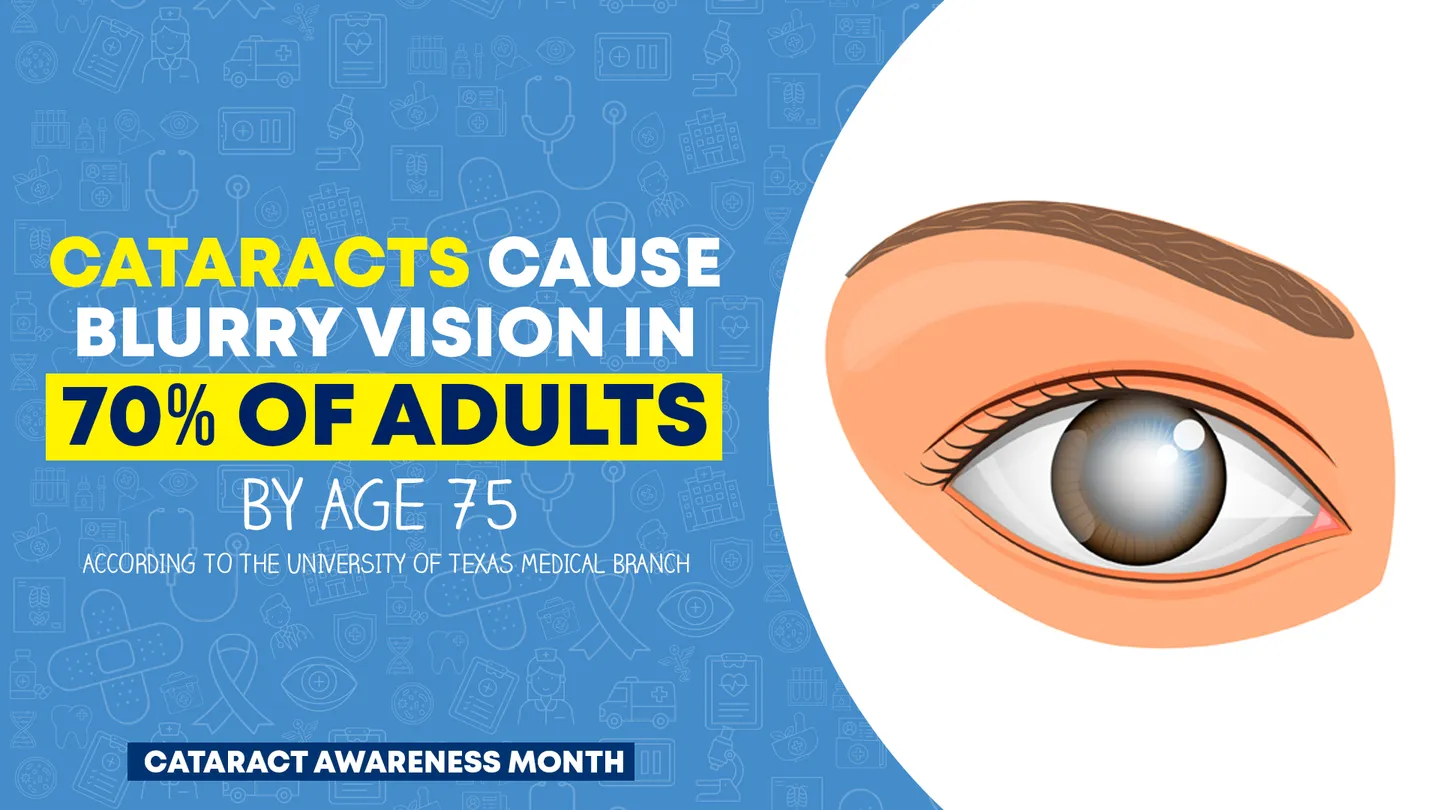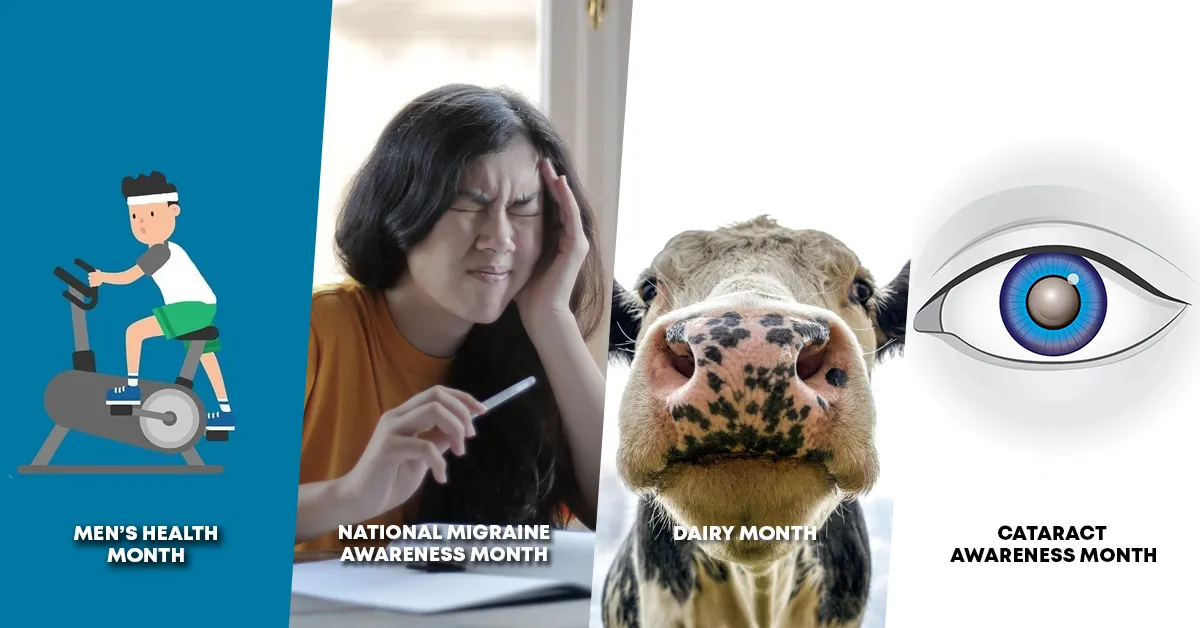June highlights a wide range of health observances. Men’s health is big this month, reminding men to schedule their annual visits and make positive changes for their overall health. Statistically, men are less likely to attend annual visits than women.
June also highlights National Migraine Awareness Month, Dairy Month, and Cataract Awareness Month.
Learn about June’s national health observances so you can get important reminders, and interesting facts, and make small changes for your health this month!
Men’s Health Month
Information from the CDC in 2016 estimated that men were as much as 18% less likely to visit their primary care provider in a given year than women.
Men’s Health Month’s mission is to increase the rate at which men see their primary care providers so that they can receive timely screenings to potentially catch serious health concerns early. Your annual physical is a great way to do this, and the visit is fully covered by most insurance companies.
If you have not been in the office for a visit in over a year, consider scheduling an annual physical for a routine checkup.
National Migraine Awareness Month
Migraines are more than headaches, they are a neurological disease and the 2nd leading cause of global disability.
Statistics from the United Kingdom estimated that in the UK alone 43 million work or school days are missed each year due to migraines. This is a serious neurological disease and should be treated as such. An increased public education on migraines can help those who do not experience migraines understand their severity.
Dairy Month
Dairy is a great source of calcium and some dairy products are also fortified with additional nutrients. When Dairy Month was established in 1937, it encouraged Americans to add more dairy to their diet. This was largely because of a dairy surplus that had occurred at the time.
Today though, we often have the opposite problem – many Americans are consuming too much dairy, or at least the wrong kind. The USDA now recommends consuming low-fat or fat-free dairy for your daily dairy intake.
How much dairy you should eat depends on your age, sex, height, weight, and physical activity level.
Cataract Awareness Month

Cataracts are the result of proteins in your eyes breaking down causing vision to become cloudy. The signs of this can start to become prominent around age 40, with an estimated 70% of adults being affected by cataracts by age 75.
Diets high in vitamin C may help decrease your risk of developing cataracts later in life.


